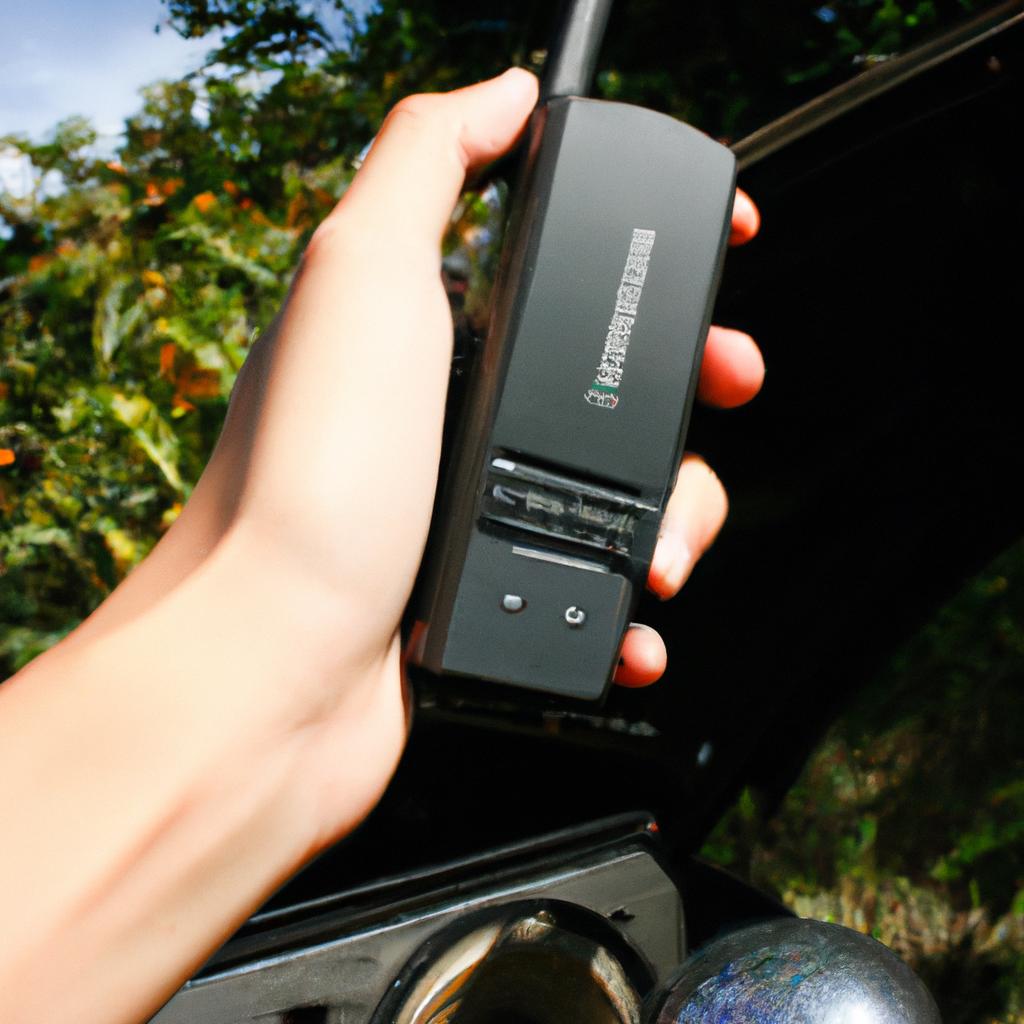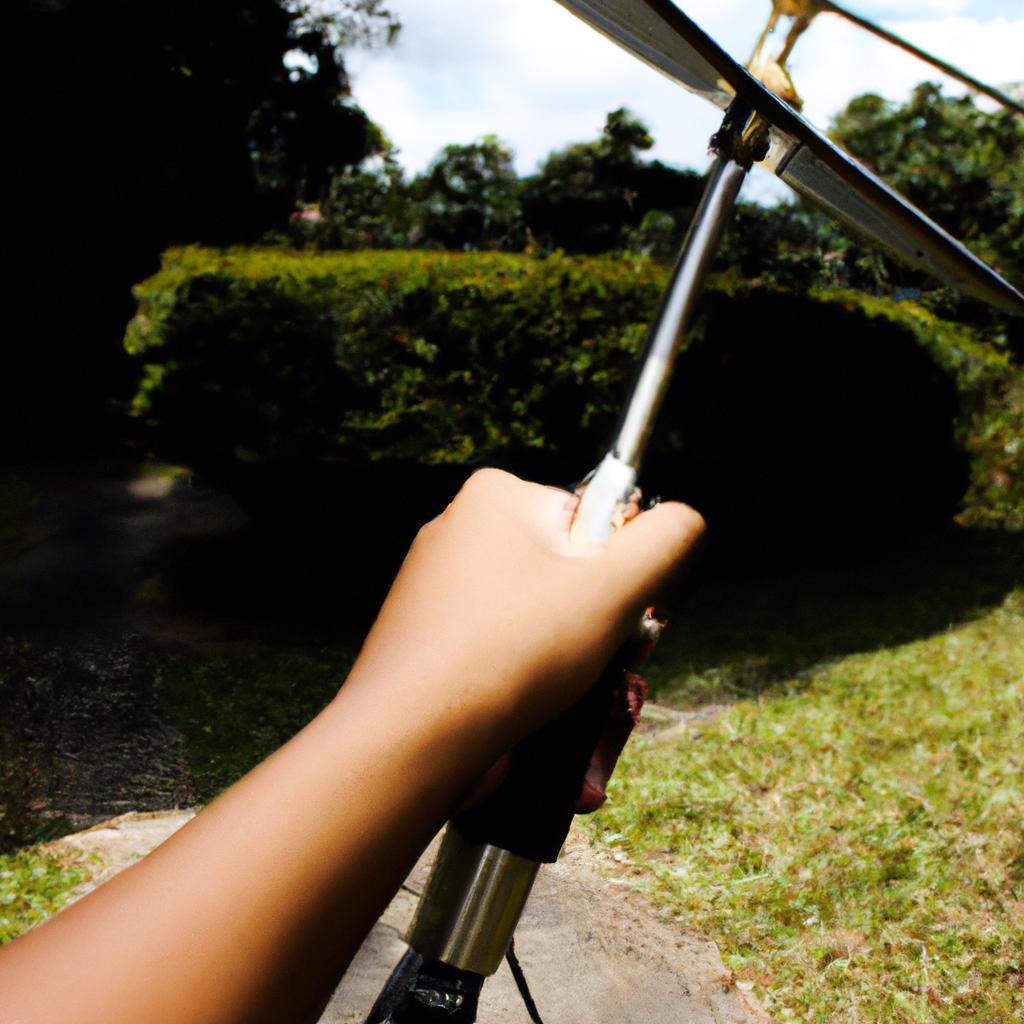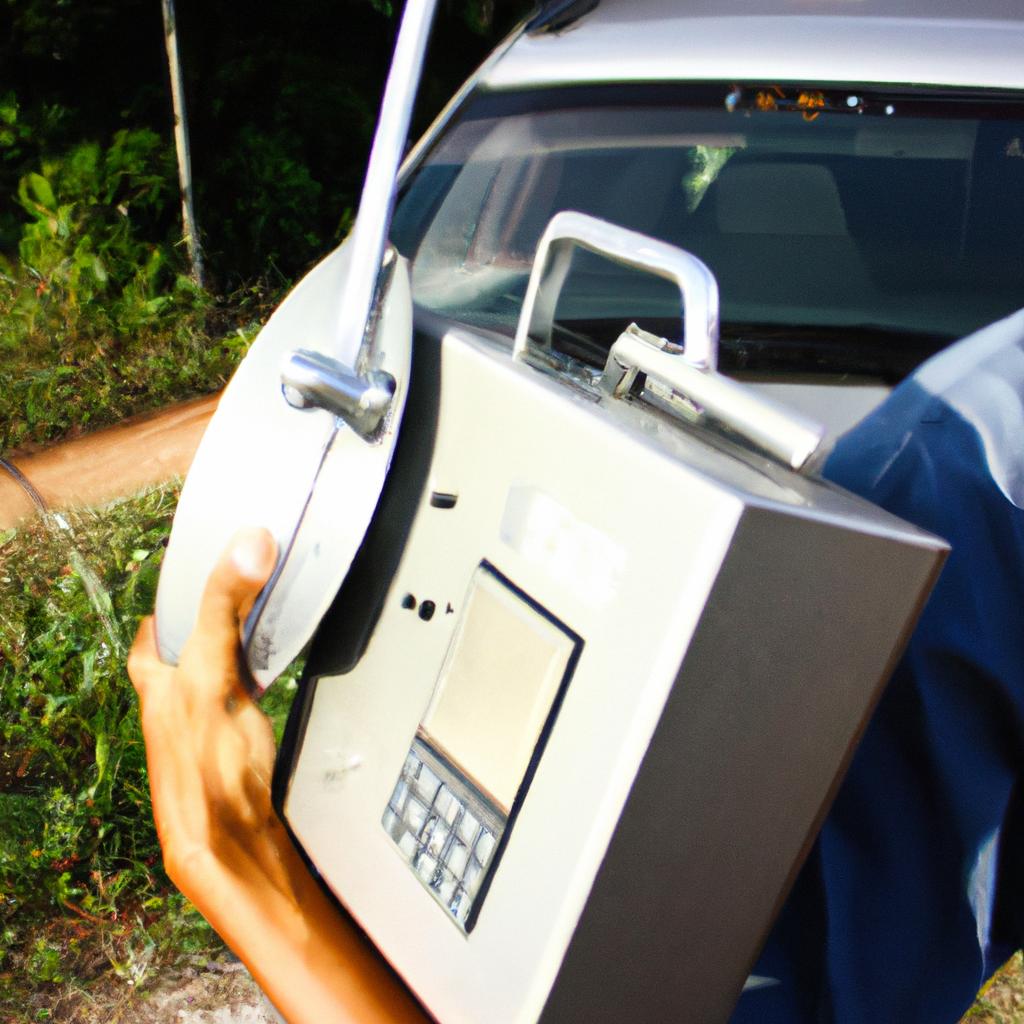In today’s fast-paced and interconnected world, access to high-quality audio entertainment is a priority for many individuals. Satellite radio has emerged as one of the most popular options in this realm, offering an array of channels with diverse content. However, despite its widespread popularity, satellite radio often faces challenges pertaining to signal quality. This article aims to explore the various factors that can impact signal quality in satellite radio and propose effective strategies for improving it.
To illustrate the significance of signal quality improvement, let us consider a hypothetical scenario where a devoted listener tunes into their favorite satellite radio station during their daily commute. As they eagerly anticipate listening to their preferred talk show host discuss thought-provoking topics, they are met with intermittent breaks in reception and poor sound quality. Frustration ensues as they struggle to decipher the dialogues amidst frustrating static interference. Such instances not only hinder the overall listening experience but also impede the transmission of crucial information or enjoyment derived from music and other forms of entertainment.
Achieving optimal signal quality in satellite radio requires a comprehensive understanding of numerous factors at play. These include but are not limited to atmospheric conditions, line-of-sight obstacles such as buildings or trees, geographical location, receiver equipment capabilities, and even human-made interferences like electronic devices or power lines. Each of these factors can contribute to signal degradation and pose challenges for listeners seeking uninterrupted and high-fidelity audio.
Atmospheric conditions, such as severe weather or solar flares, can disrupt satellite signals by scattering or absorbing radio waves. Additionally, line-of-sight obstacles like tall buildings or dense tree coverage can obstruct the direct path between the satellite and the receiver, leading to signal loss or weakening. Geographical location also plays a role, as listeners in remote areas may experience weaker signals due to the positioning of satellites in orbit.
Receiver equipment capabilities are crucial for ensuring optimal signal quality. High-quality antennas and receivers with advanced features like error correction algorithms can help mitigate signal degradation caused by environmental factors. Moreover, regular maintenance and upgrades of receiver equipment can enhance overall performance.
Human-made interferences, such as electronic devices operating on similar frequencies or power lines generating electromagnetic fields, can introduce unwanted noise into the satellite radio signal. Minimizing these interferences through proper shielding of equipment or locating the receiver away from potential sources can improve signal quality.
To enhance signal quality in satellite radio, several strategies can be employed:
-
Positioning: Ensure that the antenna is properly positioned towards the satellite’s direction with minimal obstructions blocking its line of sight.
-
Antenna Quality: Invest in a high-quality antenna designed specifically for satellite radio reception to maximize signal capture.
-
Receiver Placement: Place the receiver away from electronic devices that emit electromagnetic interference to minimize signal disruptions.
-
Regular Maintenance: Periodically inspect and clean both the antenna and receiver connections to ensure optimal performance.
-
Signal Boosters: Consider using signal boosters or amplifiers designed for satellite radio systems to strengthen weak signals caused by distance or obstructions.
-
Subscription Package: Review your subscription package to determine if there are any options available for higher bitrates or improved compression techniques that could enhance audio quality.
-
Alternative Listening Methods: If signal quality remains an issue, explore alternative listening methods such as streaming satellite radio over the internet or using mobile apps that offer offline playback options.
By implementing these strategies and understanding the factors influencing signal quality in satellite radio, listeners can greatly enhance their overall audio experience. Whether it’s enjoying music, staying informed through news broadcasts, or engaging with stimulating talk shows, improved signal quality ensures uninterrupted and pleasurable entertainment on the go.
Understanding Signal Interference
Satellite radio has revolutionized the way we listen to music, news, and entertainment. However, signal interference can sometimes hinder our listening experience. Imagine driving through a tunnel and suddenly losing reception on your favorite satellite radio station. This frustrating scenario is just one example of how signal interference can impact the quality of satellite radio signals.
To better understand signal interference, it is important to consider its causes. One common factor is physical obstructions such as tall buildings or dense foliage that obstruct the direct line of sight between the satellite and the receiver antenna. Additionally, atmospheric conditions like heavy rain or snowfall can also weaken the satellite signal strength. Furthermore, electromagnetic interference from other electronic devices in close proximity to the receiver can disrupt the clarity of the audio transmission.
Signal interference not only affects sound quality but can also lead to frequent dropouts and interruptions in playback. These issues often result in listener dissatisfaction and frustration. To illustrate this point further, consider these real-life scenarios:
- You are enjoying a long drive across rural areas when you encounter patches with weak satellite signal due to mountainous terrain.
- During an intense thunderstorm, your satellite radio experiences constant audio distortion caused by heavy rainfall interfering with the signal.
It becomes evident that understanding signal interference is crucial for enhancing overall user satisfaction with satellite radio service. Here are some key points to keep in mind:
- Physical obstructions: Tall buildings, trees, or even tunnels can impede the direct path between satellites and receiver antennas.
- Atmospheric conditions: Rainstorms or blizzards may weaken signals due to their effect on wave propagation.
- Electromagnetic interference: Other electronic devices operating nearby might introduce unwanted noise into the system.
- Listener experience: Frequent disruptions in playback affect enjoyment and reduce reliability.
Table 1 provides a visual representation of different factors contributing to signal interference:
| Factors | Effects | Implications |
|---|---|---|
| Physical obstructions | Weak signal strength | Reduced audio quality |
| Atmospheric conditions | Signal degradation | Interruptions in playback |
| Electromagnetic interference | Noise and distortion | Listener dissatisfaction |
Understanding the causes and implications of signal interference is essential for implementing effective solutions. In the subsequent section, we will explore strategies to optimize antenna placement, mitigating the impact of these interferences on satellite radio reception.
Optimizing Antenna Placement
In the previous section, we examined the various factors that contribute to signal interference in satellite radio. Now, let’s discuss how we can optimize antenna placement to improve signal quality.
Imagine a scenario where you have recently installed a satellite radio system in your car. However, upon tuning into your favorite station, you notice frequent dropouts and poor sound quality. This is likely due to suboptimal antenna placement, which can significantly affect signal reception.
To ensure optimal antenna placement and enhance signal quality, consider implementing the following strategies:
- Height: Position the antenna as high as possible to minimize obstructions such as buildings or trees that may block signals.
- Line of Sight: Ensure an unobstructed line of sight between the antenna and satellites by avoiding locations near tall structures or dense foliage.
- Orientation: Align the antenna according to the manufacturer’s instructions for maximum efficiency.
- Grounding: Properly ground the antenna to reduce electrical noise and interference.
Implementing these strategies will greatly increase your chances of obtaining clear and uninterrupted satellite radio reception. To further illustrate their importance, consider this hypothetical case study:
| Scenario | Result |
|---|---|
| Antenna placed at roof level with no obstructions | Excellent signal strength; minimal interference |
| Antenna positioned near tall building | Poor signal strength; frequent dropouts |
| Antenna aligned incorrectly | Inconsistent signal quality; intermittent dropout |
| Antenna not properly grounded | Increased static noise; reduced audio clarity |
As seen from this table, proper implementation of these strategies directly impacts signal quality and user experience.
By optimizing antenna placement through height positioning, ensuring a clear line of sight, proper orientation alignment, and grounding techniques, users can significantly improve their satellite radio reception. Minimizing signal blockage will be our next focus area as we continue our journey toward enhancing signal quality and overall listening experience.
Minimizing Signal Blockage
Transitioning smoothly from our previous discussion on optimizing antenna placement, let us now delve into another crucial aspect of improving signal quality for satellite radio. By minimizing signal blockage, we can ensure a seamless listening experience that eliminates disruptions and enhances overall satisfaction.
To better understand the significance of minimizing signal blockage, consider the following scenario: Imagine you are driving through a densely populated city with towering skyscrapers obstructing your line of sight to the satellite. This obstruction leads to weakened signals and intermittent audio reception, hampering your ability to enjoy uninterrupted music or stay informed with news updates while on the move.
In order to minimize such interference and maximize signal strength, here are some essential tips:
- Elevate the Antenna: Positioning the antenna at an elevated location can help overcome potential obstructions caused by buildings or other physical barriers.
- Avoid Surrounding Interference: Keep the antenna away from objects that may interfere with the signal transmission, such as metal structures or electronic devices emitting electromagnetic waves.
- Choose Open Spaces: Whenever possible, park your vehicle in open areas where there is minimal surrounding interference and clear visibility to the sky.
- Adjust Angle and Orientation: Experiment with different angles and orientations of the antenna to find the optimal position that provides maximum signal strength.
Now let’s explore these suggestions further in a table format:
| Tips for Minimizing Signal Blockage |
|---|
| Elevate the Antenna |
| Avoid Surrounding Interference |
| Choose Open Spaces |
| Adjust Angle and Orientation |
By implementing these strategies effectively, listeners can significantly reduce instances of weak connections or dropped signals. Achieving this improved level of stability ultimately contributes to an enhanced user experience, allowing individuals to fully immerse themselves in their favorite satellite radio content without interruptions.
With a solid understanding of how to optimize antenna placement and minimize signal blockage, we can now explore the next step in improving signal quality: utilizing signal boosters.
Utilizing Signal Boosters
Imagine you are driving in a remote area, enjoying your favorite music on satellite radio when suddenly the signal becomes weak and starts cutting out. Frustrating, right? In this section, we will explore ways to improve the performance of the antenna, ensuring a stronger and more consistent signal for uninterrupted listening pleasure.
Enhancing Antenna Performance:
To overcome signal blockage and interference issues, consider implementing these strategies:
-
Positioning the antenna strategically:
- Place the antenna outside or near a window to reduce obstruction from buildings or trees.
- Orientate it towards the satellite for maximum signal reception.
- Avoid placing objects around the antenna that may interfere with its line of sight to the sky.
-
Using high-gain antennas:
- High-gain antennas amplify weak signals, allowing for improved reception even in challenging environments.
- Consider upgrading to an external high-gain antenna specifically designed for satellite radios.
-
Employing signal reflectors:
- Signal reflectors can help redirect and concentrate radio waves toward the receiver.
This enhances signal strength and reduces loss due to obstructions.
- Signal reflectors can help redirect and concentrate radio waves toward the receiver.
-
Experimenting with different mounting locations:
- Try alternative mounting positions and heights to find the optimal location where you receive better signal quality.
By incorporating these practices, you can significantly enhance your satellite radio’s antenna performance, leading to improved signal quality and reduced interruptions during your listening experience.
As important as optimizing antenna performance is, reducing signal loss is another crucial aspect worth exploring further.
Reducing Signal Loss
Case Study: Maximizing Signal Reception in Rural Areas
Consider a scenario where an individual resides in a rural area with limited access to terrestrial radio stations. In such cases, satellite radio offers an enticing alternative for uninterrupted music and news broadcasts. However, the signal quality of satellite radios can sometimes be compromised due to various factors. This section focuses on strategies aimed at enhancing signal quality for optimal reception.
To ensure better signal strength and minimize interruptions, several techniques can be employed:
- Positioning the Antenna: Proper placement of the antenna is crucial for maximizing signal reception. Placing it near windows or outside buildings facing the transmitting satellites can significantly improve signal strength.
- Utilizing External Antennas: For individuals residing in areas with weak signals, using external antennas specifically designed for satellite radios can provide a substantial boost to the overall signal quality.
- Avoiding Obstructions: Clear line-of-sight between the antenna and the transmitting satellites is essential to prevent obstructions that may hinder signal transmission. Removing objects like trees or tall structures obstructing the antenna’s view will help enhance signal strength.
- Updating Firmware and Software: Regularly updating firmware and software of satellite radio receivers ensures compatibility with new technologies introduced by service providers, leading to improved overall performance.
In summary, improving signal quality in satellite radio reception involves strategic positioning of antennas, utilizing external antennas if necessary, removing potential obstructions from the line-of-sight, as well as keeping receiver firmware and software up-to-date.
| Benefits of Enhanced Signal Quality |
|---|
| 1. |
| 3. |
Moving forward into our next section about “Enhancing Receiver Sensitivity,” further steps will be explored to optimize your satellite radio experience without compromising its portability and convenience.
Enhancing Receiver Sensitivity
Building on the strategies discussed in reducing signal loss, this section focuses on enhancing receiver sensitivity to further improve signal quality in satellite radio transmission. By optimizing the performance of receivers, we can minimize interference and ensure a seamless listening experience for users.
Example:
Consider a scenario where a satellite radio user is driving through an area with tall buildings that obstruct the line-of-sight between the satellite and the receiver antenna. In such situations, poor receiver sensitivity can lead to degraded signal reception or even complete loss of signal. To overcome these challenges and enhance receiver sensitivity, several techniques can be employed:
-
Advanced Antenna Design:
- Implementing highly directional antennas that focus on receiving signals from specific directions.
- Utilizing multi-element phased array antennas capable of dynamically adjusting their beam patterns to optimize reception.
-
Low-Noise Amplifiers (LNAs):
- Integrating LNAs into the receiver circuitry to amplify weak incoming signals while minimizing additional noise contribution.
- Employing LNAs with low power consumption to ensure efficient energy usage without compromising sensitivity.
-
Digital Signal Processing (DSP) Techniques:
- Incorporating advanced DSP algorithms to mitigate interference caused by fading, multipath propagation, and other disturbances.
- Applying adaptive equalization techniques within the digital domain to compensate for frequency selective fading effects.
Table Example:
| Technique | Advantages | Limitations |
|---|---|---|
| Highly Directional Antennas | Enhanced reception accuracy | Restricted coverage range |
| Multi-Element Phased Array | Dynamic beam pattern control | Expensive implementation |
| Low-Noise Amplifiers | Increased weak signal detection | Additional noise amplification |
| Digital Signal Processing (DSP) | Improved interference mitigation | Complex algorithm implementation |
By incorporating these techniques, we can significantly enhance the sensitivity of satellite radio receivers. This results in improved signal quality and a more robust listening experience for users regardless of environmental factors such as urban landscapes or challenging terrain.
In conclusion, optimizing receiver sensitivity is an essential aspect of improving signal quality in satellite radio transmission. Utilizing advanced antenna designs, low-noise amplifiers, and digital signal processing techniques enables us to overcome obstacles caused by signal loss or degradation. By focusing on enhancing receiver sensitivity, we can ensure reliable reception and deliver high-quality audio content to satellite radio enthusiasts worldwide.
 K7BUC
K7BUC



